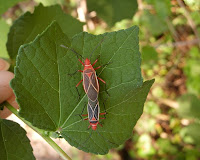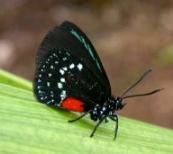NABA Butterfly Fall North Circle Count
This is the first time Broward County Butterfly Chapter of the North American Butterfly Association (NABA) has attempted a Fall Seasonal Count, but we had a very successful day! Fifteen participants helped out, including five children who found some butterflies we adults would have missed…sharp eyes! We saw twenty-four species, with a count of 73 individuals. The high count of the day was the Julia heliconius, followed by the Zebra Longwing and the White Peacock. We haven’t gotten ALL of the data yet. THANKS to all the participants, especially Art Constantino (Master Gardener) and Sandy Granson (Broward County IFAS Extension).
Seasonal counts help us monitor the butterfly populations, which of course tell us something about the state of our environment. This past summer’s count had lower than usual numbers, but we discovered later that the area had been sprayed for mosquito control the week before. Less pesticide=more butterflies. Simple equation.
We have the advantage here in South Florida to be able to do seasonal counts four times a year. Our next count will be sometime in April, so we hope you and your family and friends will consider joining one of these events. Our “South Circle” counts take place at
Tree Tops Park, Pine Island Ridge Natural Area and Long Key Natural Area. The “North Circle” counts take place at Hillsboro Pineland Natural Area, Crystal Lake Natural Area, Tamarind Village, and Hugh Taylor Birch State Park. To learn more about the counts, and our very informative, fun chapter meetings, visit our webpage at browardbutterflies.org.
Counts start at 8:30 AM until noon; often we continue counting after a short lunch break. The $3.00/person (adults, over 12) supports the North American Butterfly Association. It is always a learning experience, even for seasoned counters, as we find all kinds of new things, whether butterflies, birds, plants or other cool insects. This is Rivinia humilis, flowers and berries.
I didn’t shoot photos of butterflies on this count, but did get this great shot of “Red Bugs” (yeah, that’s what they are called). They are BRIGHT red and were hanging out on one of the most obnoxious invasive plants, Caesar’s Weed. Too bad it’s such a nasty plant because the small pink hibiscus-like flowers are very pretty. The Red Bugs (Pyrrhocoridae family) were (ahem) sure enjoying the plant.
Seasonal counts help us monitor the butterfly populations, which of course tell us something about the state of our environment. This past summer’s count had lower than usual numbers, but we discovered later that the area had been sprayed for mosquito control the week before. Less pesticide=more butterflies. Simple equation.
We have the advantage here in South Florida to be able to do seasonal counts four times a year. Our next count will be sometime in April, so we hope you and your family and friends will consider joining one of these events. Our “South Circle” counts take place at
Tree Tops Park, Pine Island Ridge Natural Area and Long Key Natural Area. The “North Circle” counts take place at Hillsboro Pineland Natural Area, Crystal Lake Natural Area, Tamarind Village, and Hugh Taylor Birch State Park. To learn more about the counts, and our very informative, fun chapter meetings, visit our webpage at browardbutterflies.org.
Counts start at 8:30 AM until noon; often we continue counting after a short lunch break. The $3.00/person (adults, over 12) supports the North American Butterfly Association. It is always a learning experience, even for seasoned counters, as we find all kinds of new things, whether butterflies, birds, plants or other cool insects. This is Rivinia humilis, flowers and berries.

I didn’t shoot photos of butterflies on this count, but did get this great shot of “Red Bugs” (yeah, that’s what they are called). They are BRIGHT red and were hanging out on one of the most obnoxious invasive plants, Caesar’s Weed. Too bad it’s such a nasty plant because the small pink hibiscus-like flowers are very pretty. The Red Bugs (Pyrrhocoridae family) were (ahem) sure enjoying the plant.
A friend gave me a very large sphinx butterfly the other day at the Biology Lab; it took a little digging to find the species, but it was a “Ficus Sphinx” (Pachylia ficus)….unfortunately, it was near the end of it’s short adult life, so it didn’t last long after arriving. But it did give the biology students a great opportunity to get a look at this magnificent large butterfly. Most of the large sphinx moths live out the majority of their lives as larvae (growing to quite an impressive size as well!) Upon emergence from the chrysalis, they live just long enough to find a mate, lay their eggs and then die shortly after. Some don’t feed at all as adults, their mature lifespan is so short.
short adult life, so it didn’t last long after arriving. But it did give the biology students a great opportunity to get a look at this magnificent large butterfly. Most of the large sphinx moths live out the majority of their lives as larvae (growing to quite an impressive size as well!) Upon emergence from the chrysalis, they live just long enough to find a mate, lay their eggs and then die shortly after. Some don’t feed at all as adults, their mature lifespan is so short.
 short adult life, so it didn’t last long after arriving. But it did give the biology students a great opportunity to get a look at this magnificent large butterfly. Most of the large sphinx moths live out the majority of their lives as larvae (growing to quite an impressive size as well!) Upon emergence from the chrysalis, they live just long enough to find a mate, lay their eggs and then die shortly after. Some don’t feed at all as adults, their mature lifespan is so short.
short adult life, so it didn’t last long after arriving. But it did give the biology students a great opportunity to get a look at this magnificent large butterfly. Most of the large sphinx moths live out the majority of their lives as larvae (growing to quite an impressive size as well!) Upon emergence from the chrysalis, they live just long enough to find a mate, lay their eggs and then die shortly after. Some don’t feed at all as adults, their mature lifespan is so short. Labels: NABA butterfly count



0 Comments:
Post a Comment
<< Home